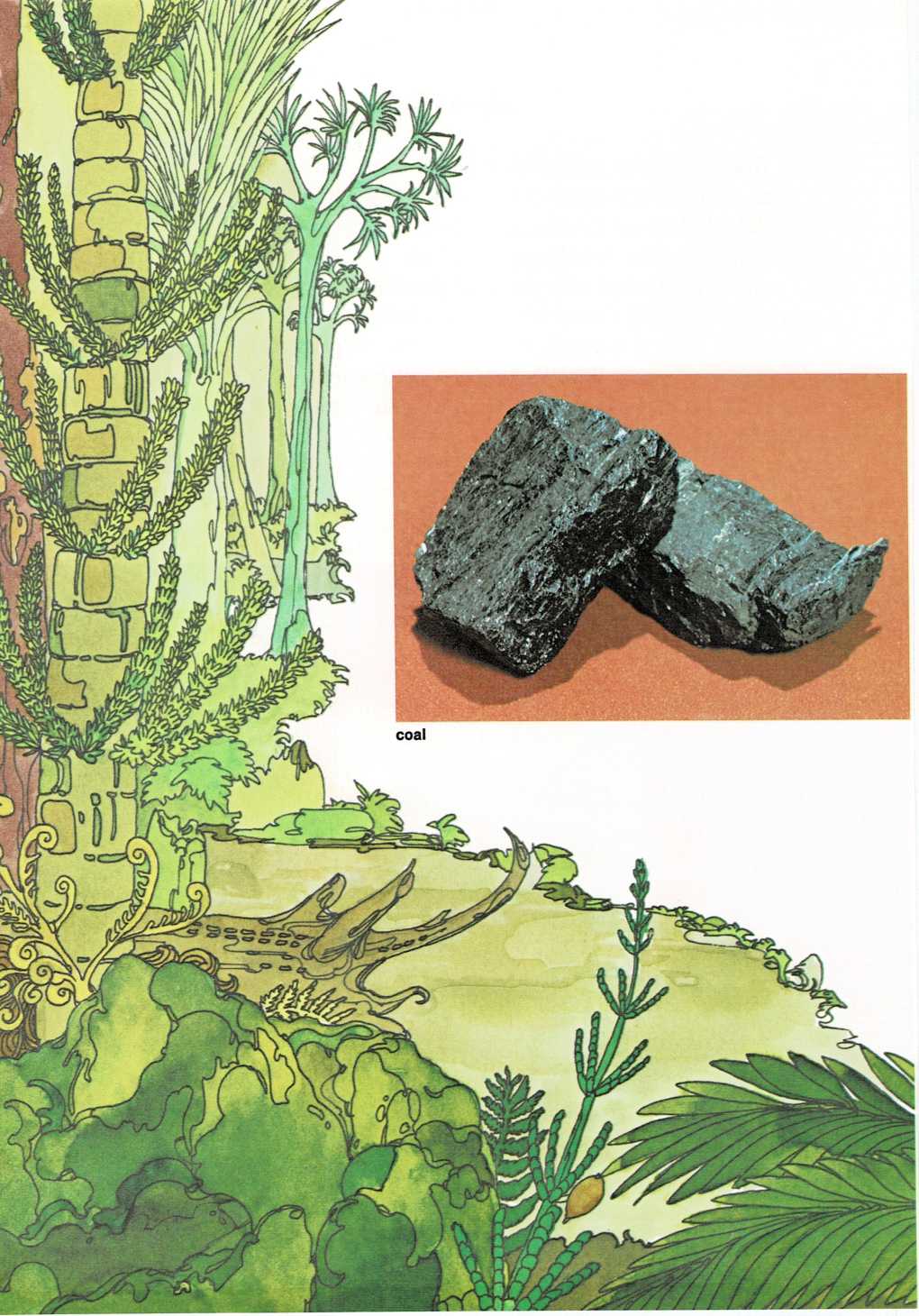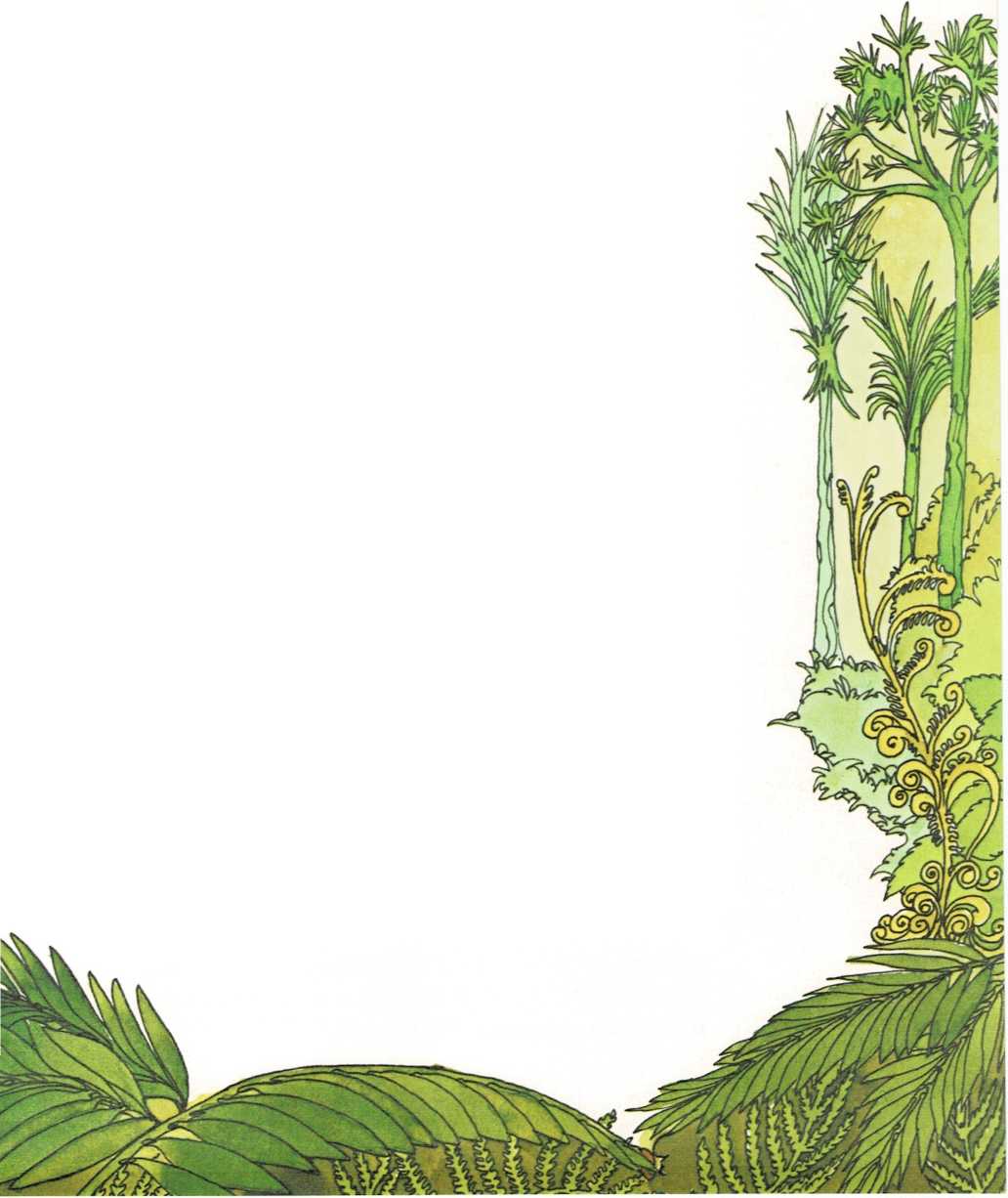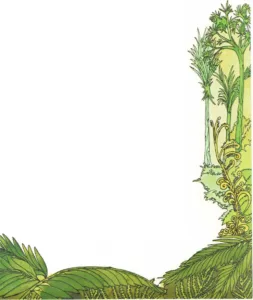
Buried sunshine

Nearly all rocks are made of minerals—things that are not alive and
never have been. But there is one kind of rock that is not made of
minerals. It is coal, a black shiny rock made of—green plants!
Millions of years ago much of the world was hot and swampy.
Strange-looking trees and giant ferns covered most of the land. When
these big plants died, they toppled over and sank into the mud. Then
they were buried under other plants that fell on top of them. In time,
there was a thick layer of dead plants. As the plants rotted, they
formed a thick, lumpy brown stuff called peat.
Parts of the land began to sink. Water poured in, bringing mud and sand
that covered the peat. Tons of water, mud, and sand pressed down on the
peat, squeezing it tightly together. All this weight and squeezing
turned the peat into coal.
After millions of years, the earth changed. Places that had been covered
with water became dry land. Mud and sand had turned to rock. The great
masses of coal were buried deep in the rock.
Today, miners dig coal out of the earth. Coal is burned to heat houses,
schools, and other buildings. Burning coal is used to make steam that
turns the big machines that make electricity for heat, light, and power.
When we burn coal, we are really burning plants that grew millions of
years ago. This is why coal is sometimes called “buried sunshine.”

